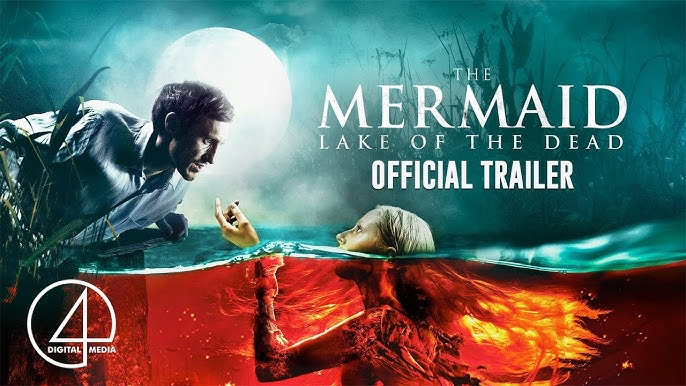Some legends are born in whispers; others rise from the deep with vengeance in their eyes. The Mermaid: Lake of the Dead (2018), directed by Svyatoslav Podgayevskiy, is a haunting dive into Slavic folklore, merging myth, melancholy, and menace in a spectral ballet of water and woe.

Set in the shadow of a mist-covered Russian lake, the film opens with chilling restraint — soft ripples, a haunting melody beneath the surface, and a sense that something ancient stirs below. From this stillness emerges Irina, a young woman caught between love and doom, played with quiet urgency by Viktoriya Agalakova. Her innocence and optimism begin to fray as a sinister presence reveals itself: a cursed mermaid, once a scorned bride, now an instrument of unrelenting sorrow.
Unlike the sirens of Western tales, this mermaid is no enchanting beauty luring sailors with songs. She is drenched in grief, driven by betrayal, and capable of psychological and supernatural torment. Her design is deeply unsettling — pale, mournful eyes, hair drifting like weeds in the dark, and a presence that clings like cold water. She’s not merely a monster; she’s an echo of pain given form.

What makes Lake of the Dead stand out is its commitment to mood and myth. The cinematography lovingly captures the lake’s duality: serene by day, suffocating by night. The underwater sequences are particularly arresting — not only in visual clarity but in the way they play with silence, gravity, and the claustrophobic dread of being watched from the depths.
The romance that threads through the story — Irina’s relationship with her fiancé, Roma — becomes the emotional crux of the narrative. As he too falls under the mermaid’s spell, the film shifts from ghost story to cursed love triangle, and the stakes become tragically personal. It’s not just about surviving the curse; it’s about breaking it, even if it means choosing between love and letting go.
Director Podgayevskiy understands that horror is more than jump scares. He builds suspense through glances, dreams, and the tightening noose of inevitability. There’s an oppressive fatalism to the story, a sense that once the mermaid marks you, the end is written — only the shape of the suffering remains to be seen.

While the pacing in the middle act dips — lingering too long on character hesitation and romantic flashbacks — it ultimately works to deepen the emotional resonance. When terror strikes again, it feels earned, more tragic than exploitative. The final confrontation, set in the drowned chapel beneath the lake, is a stunning collision of folklore, sacrifice, and poetic horror.
Thematically, the film taps into universal fears: the lure of desire, the pain of betrayal, and the horror of being forgotten beneath the surface — both literally and metaphorically. It’s less about cheap frights and more about the shadows we carry, the wounds that don’t heal, and the spirits we create when love dies violently.
In a genre often dominated by formula, The Mermaid: Lake of the Dead swims against the current. It dares to be mournful, eerie, and beautiful — a ghost story in slow motion, where water becomes both grave and mirror.

⭐ Rating: 7.5/10
A sorrow-soaked fairy tale for fans of atmospheric horror, The Mermaid: Lake of the Dead offers a haunting take on love’s darker depths — where not all who drown are lost, and not all who rise seek salvation.
“Some love stories end in happily ever after. Others sink beneath the surface… and wait.”



